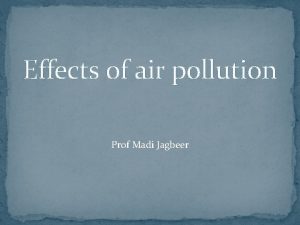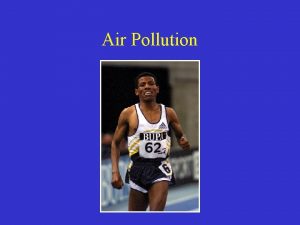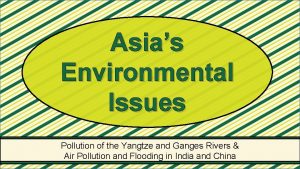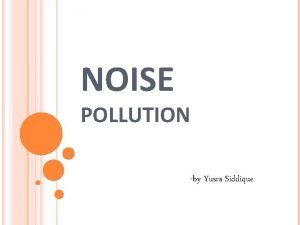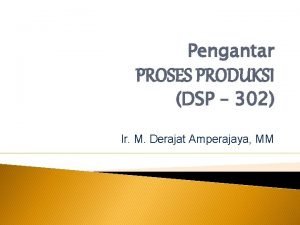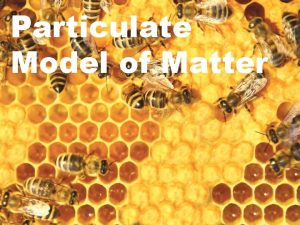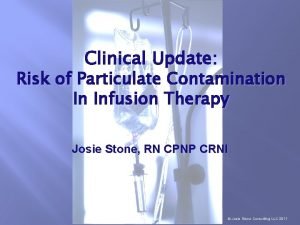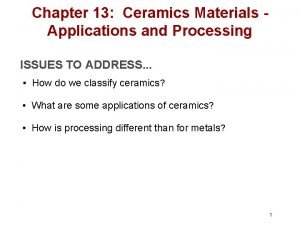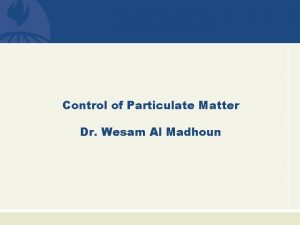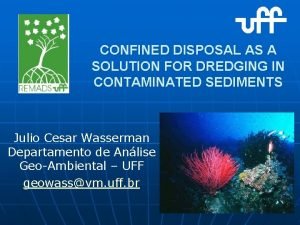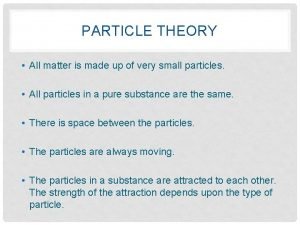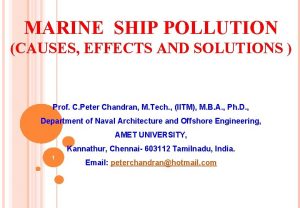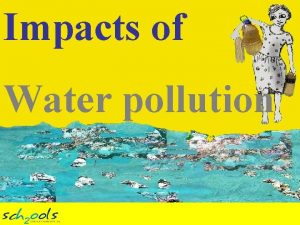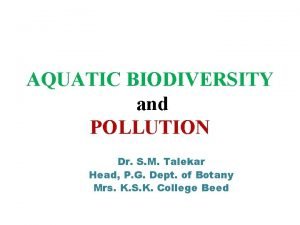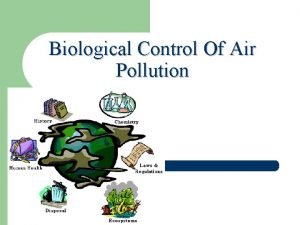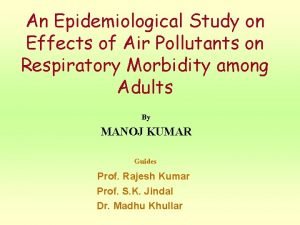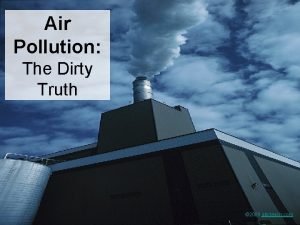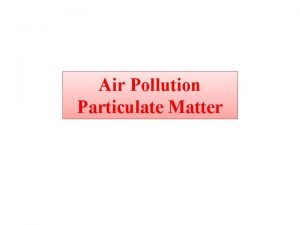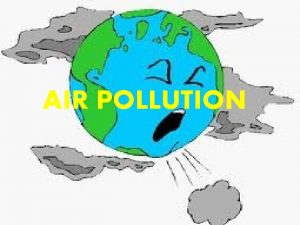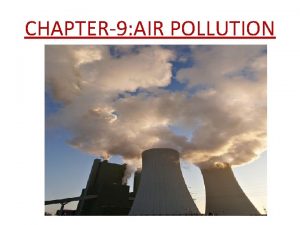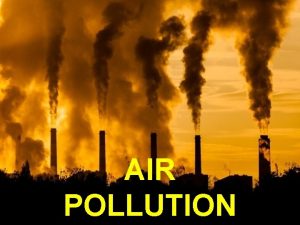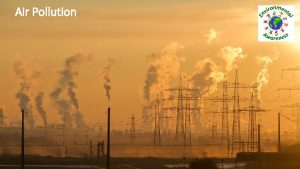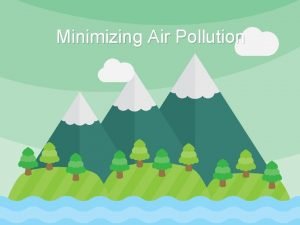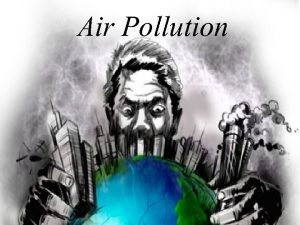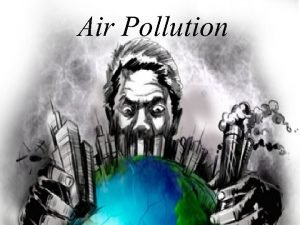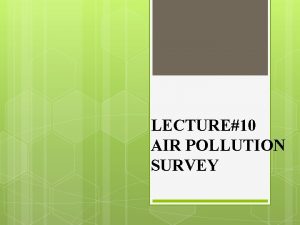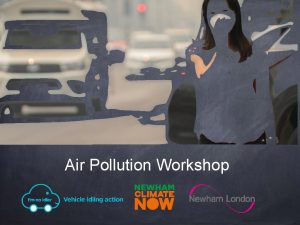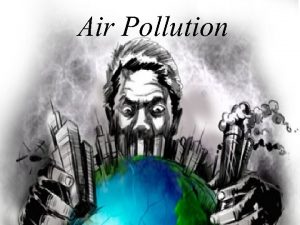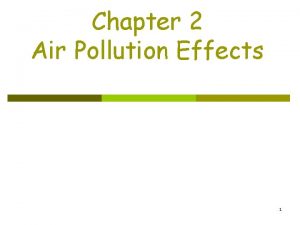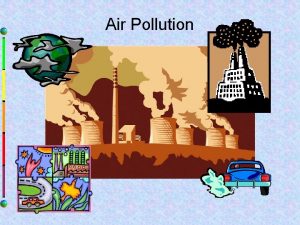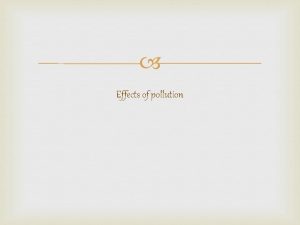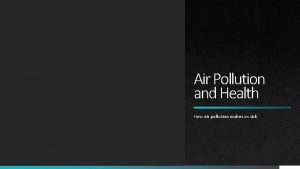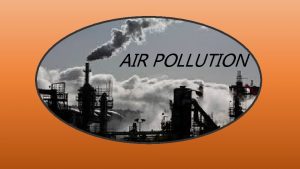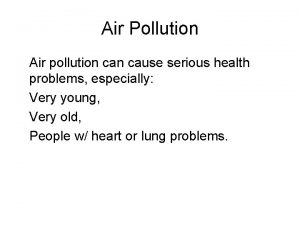Health Effects of Particulate Air Pollution Stuart L






























- Slides: 30

Health Effects of Particulate Air Pollution Stuart L. Abramson, M. D. , Ph. D. November 10, 2004 Shell Center for Sustainability at Rice University

www. epa. gov/nheerl/research/pm • “Research indicates that air pollution in the form of particulate matter, or PM, at concentrations currently allowed by national standards (the National Ambient Air Quality Standards, or NAAQS) is linked to thousands of excess deaths and widespread health problems. Part of the EPA’s mission is to protect human health by strengthening the scientific basis of air quality regulations. ”

PM Health Effects • Some effects are known, others likely unknown—consider the “precautionary principle”—may be more effects seen with ultrafine particles (<0. 1 microns) • Political and economic implications to be considered

Questions to answer • • Who? is affected Where? does exposure take place What? characterizes the particles involved When, Why and How? are certain health effects seen (morbidity and mortality)

• Who is most sensitive to effects of PM? The youngest – Minute ventilation standardized for body mass is significantly greater in infancy (400 ml/min/kg) and early childhood than in adults (150 ml/min/kg); radii of developing airways are smaller and have less mature anti-oxidant and detoxification capacity • The oldest – Often due to chronic underlying disease (e. g. lung, heart, diabetes); also less active repair mechanisms in response to lung injury • Those of any age with chronic disease • All in-between have been in the youngest category and many will reach the oldest category— so……IT’S EVERYONES PROBLEM



Locations of PM exposure • Outdoors • Indoors – Miscellaneous indoor exposures (cigarettes, candles, wood-burning stoves, fireplaces, etc. ) – In vehicle in traffic – Occupational exposures – Hobbies

Characterization of PM • PM 10 (“coarse”; primarily oxides or salts of elements found in dirt—e. g. Fe, Ca, Si, Al) • PM 2. 5(“fine”; sulfates, nitrates, ammonium, organic and elemental carbon, acid aerosols) • Ultrafine (<100 nm) • How does PM composition (including diesel exhaust particles) in Houston differ from other areas?

Heath Effects Indices • General morbidity and mortality absenteeism, EC, hospitalizations • Respiratory exacerbations (asthma, COPD, bronchitis, emphysema) • Cardiovascular rhythm disturbances, vascular changes (atherosclerosis, heart attacks) • Immunological/Cancer rates (HAPs, PAHs) • Neuropsychological • Reproductive (low birth weight)/Endocrinological

Factors involved in the development of health effects • • Amount of exposure Duration of exposure Co-exposures; combinatorial effects? Constitutional factors (age, sex, ethnicity)

Symptoms of PM exposure • • Shortness of breath Chest tightness Chest pain Palpitations Coughing Wheezing Fatigue • • • Eye irritation Nasal irritation Throat irritation Headache Others (e. g. cognitive impairment)

Health effects of particulate matter (PM) air pollution • Based on epidemiological studies & others (e. g. animal studies) • Respiratory—increase in asthma attacks, COPD exacerbations, decreased lung function, bronchitis, and more allergic sensitization • Cardiovascular—increased risk of heart attack, rhythm disturbances, vascular changes (increase risk of stroke--Kuenzli et al. AHA Scientific Session, November 20004, New Orleans) • Cancer—increased risk of lung cancer

PM health effects • Asthma and COPD exacerbations, decreased lung function, bronchitis sx, effects on lung development – Brunekeef B and ST Holgate, Lancet, 2002 – Gauderman WJ et al. N Eng J Med, 2004— prevalence of FEV 1<80% predicted was 4. 9 x greater in subjects with high PM 2. 5 exposure from ages 10 -18 years

Selected Criteria Air Pollutants (with similar effects on respiratory disease) • • Ozone Sulfur dioxide Nitrogen dioxide PM (2. 5 or 10 microns) – effects on asthma may include: • increased bronchial reflexes, analogous to histamine or methacholine • increased inflammation • enhancement of early or late phase response • enhancement of sensitization to allergens

Asthma: Pathophysiology Airway lumen narrowing Mucous gland hypertrophy and hyperplasia Edema Epithelial damage Airway smoothmuscle hypertrophy, hyperplasia, and bronchoconstriction Inflammatory cell infiltration Mucus hypersecretion Thickening of basement membrane Vascular dilation Goblet cell hyperplasia Adapted from Expert Panel Report. Guidelines for the Diagnosis and Management of Asthma. NIH, NHLBI. 1991. NIH publication 91 -3042.

Mechanisms for Effect of Cigarette Smoking on Asthma • • • Decreased airway caliber Decreased level of lung function Allergy Increased airway responsiveness Increased inflammatory markers Gene by environment interactions

Cigarette smoke exposure • “Firsthand unfiltered toxic gaseous exposure”—get rid of secondhand or “passive” label

Emphysema—marked thinning of alveoli

Rhinitis (allergic and other) may be associated with the development of other diseases due to common passageways

PM health effects, cont. • Increased heart rate, arrhythmias, cardiovascular mortality – Dockery DW, Environ Health Perspect, 2001

PM may narrow arteries • Kuenzli et al. (2004) looked at a sample of 800 adults (at least 40 years old) via ultrasound of carotid arteries – For every 10 point increase in PM 2. 5, carotid arteries were 4% narrower – For women over 60, every 10 point increase led to more than 15% narrowing – The above data suggest increased risk for stroke with increased PM 2. 5 exposure

www. epa. gov/pmresearch

PM Health Effects--Numbers of interest • In a 151 city study, a 10 microgram/cubic meter increase in mean particulate matter resulted in a 4% increase in overall mortality, 6% increase in cardiopulmonary mortality, and an 8% increase in lung cancer mortality (Pope CA et al. , JAMA 2002) • Comparative findings in a 20 city study, showing 0. 51% increase in the relative rate of death from 1987 -1994 for all causes and 0. 68% increase in death from cardiovascular and respiratory causes for the same incremental increase in PM (Samet JM et al. , N Eng J Med, 2000)

PM health effects, cont. • Increased allergic sensitization (DEP) • Reproductive effects (PAHs with low birth weight, premature birth—small effects) – Sram RJ; Perera FP et al. , Environ Health Perspect, 1999

Diesel Exhaust Particles and Asthma • The combination of diesel exhaust particles and specific allergens is synergistic in the development of allergic sensitization and asthma (Saxon and Diaz-Sanchez, Immunopharmacology, 2000)

Polycyclic Aromatic Hydrocarbon Metabolism Casillas et al. , Annals of Allergy, Asthma, & Imm, 1999

“Typical” diesel exhaust particle Casillas et al. , Ann All Asthma Immunol 1999

Health Effects Reference for Houston, TX • “Assessment of Information Needs for Air Pollution Health Effects Research in Houston, Texas” (2003); Report by BRIDGES to Sustainability and Mickey Leland National Urban Air Toxics Research Center to the Texas Council on Environmental Technology, 67 pages. www. bridgestos. org

Environmental Health
 Effects of air pollution on plant
Effects of air pollution on plant General effects of air pollution
General effects of air pollution 5 effects of air pollution
5 effects of air pollution Land pollution effects on human health
Land pollution effects on human health Effects of noise pollution
Effects of noise pollution Chapter 12 section 1
Chapter 12 section 1 Chapter 12 air section 1 what causes air pollution
Chapter 12 air section 1 what causes air pollution Pt tanah air sentosa
Pt tanah air sentosa Shaping process adalah
Shaping process adalah What is the particulate model of matter
What is the particulate model of matter Particulate contamination in infusions
Particulate contamination in infusions Particulate forming process in ceramics
Particulate forming process in ceramics Wesam al madhoun
Wesam al madhoun Confined space dredging
Confined space dredging Particle theory of matter
Particle theory of matter God of radiation
God of radiation Is milk macroscopic microscopic or particulate
Is milk macroscopic microscopic or particulate Mendelian inheritance
Mendelian inheritance Section 3 water pollution
Section 3 water pollution Control measures of noise pollution
Control measures of noise pollution Pollution causes effects and solutions
Pollution causes effects and solutions Marine noise pollution
Marine noise pollution Effects of water pollution
Effects of water pollution What are 5 effects of water pollution?
What are 5 effects of water pollution? Conclusion for air pollution presentation
Conclusion for air pollution presentation 8 effects of water pollution
8 effects of water pollution Soil pollution images diagram
Soil pollution images diagram Introduction about air pollution
Introduction about air pollution Air pollution contents
Air pollution contents Aims and objectives of air pollution
Aims and objectives of air pollution Main cause of air pollution
Main cause of air pollution
